Guys,
Now for a difficult part, the frizzen. Earlier in this topic I used a store-bought frizzen, not a good way to show how to really make a gunlock. My apology for being lazy. I find the hammer or cock a really fun part to make. Not so with the frizzen. Anyway, here we go. I start with a square bar of W1 tool steel, nearly the same as 1095 steel, fully hardenable water quench steel. Use 9/16 or 5/8 inch square bar.

Forge a blade that is the width and length needed for the frizzen. Leave a sharp transition back to square. The remaining square part will eventually be the frizzen section that has the pivot hole/cam/stop. If you try to make a frizzen from a piece of flat stock, it is much more difficult to "bump-up" the section here to a larger thickness. When forging it is a lot easier to make a thick part thinner than it is to make a thin part thicker. Here you can see I forged a small bump that will be the part of the frizzen pan cover away from the flash hole side.
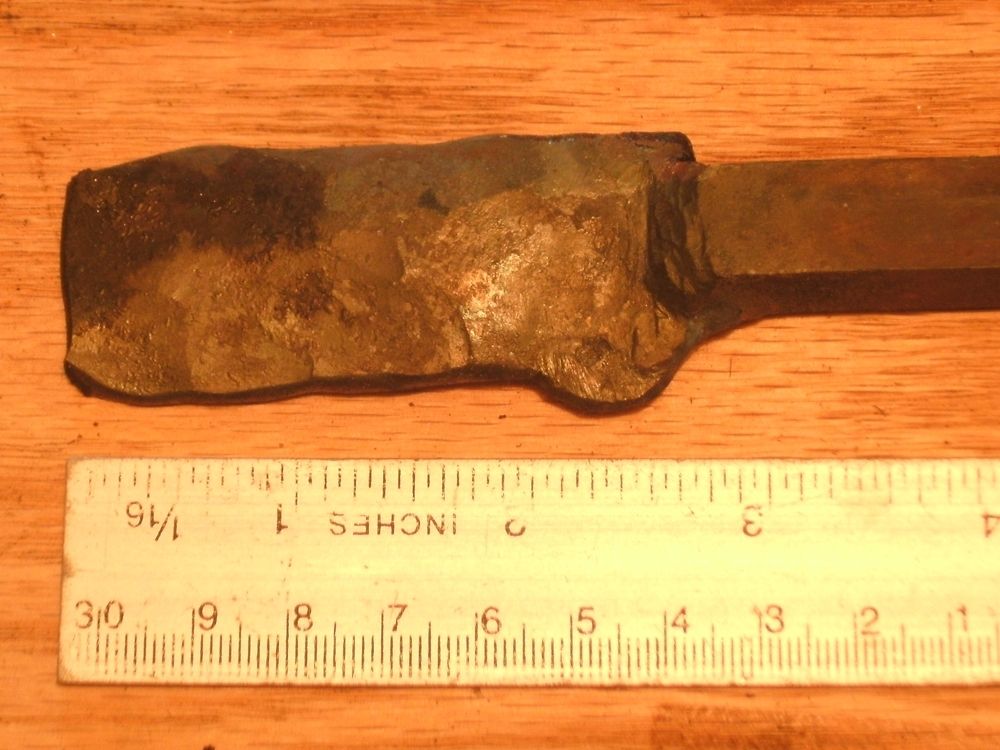
Next, make the bend at the transition of the frizzen from the pan cover to the blade. You must work a lot on this bend to get the outside corner really square and sharp. This takes me at least a dozen heats to change the bend from a gentle curve to a sharp corner. You really should not try to short cut this step.
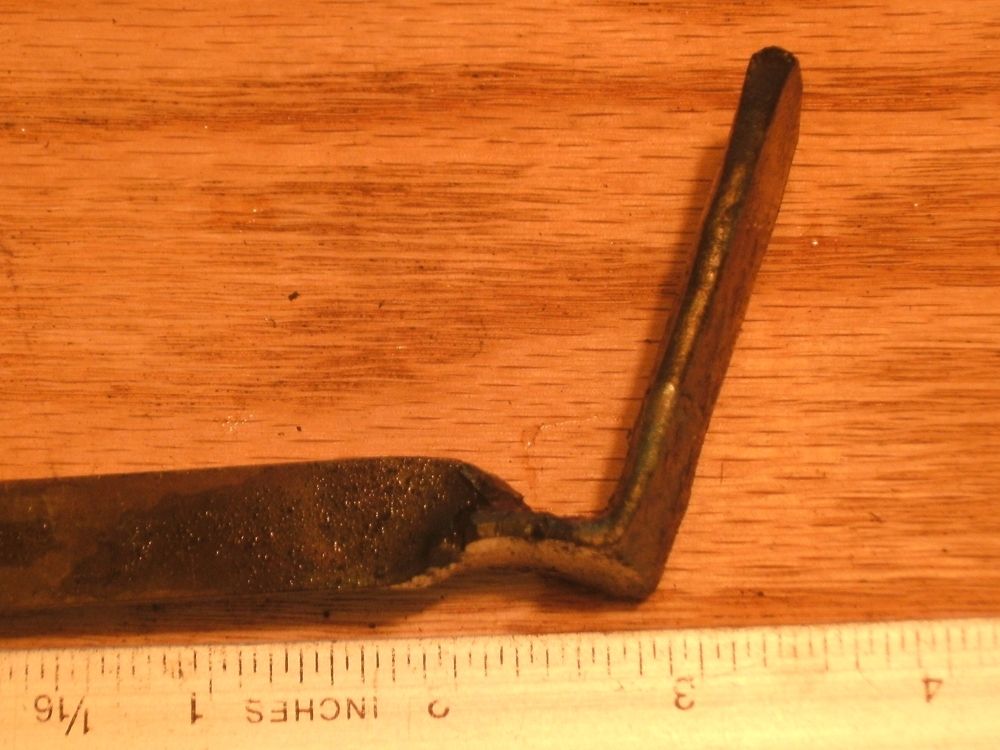
Next, bend the remaining square section down for the hole/cam/stop area. Cut the rough frizzen from the bar leaving plenty of material for this section, don't cut it too short.
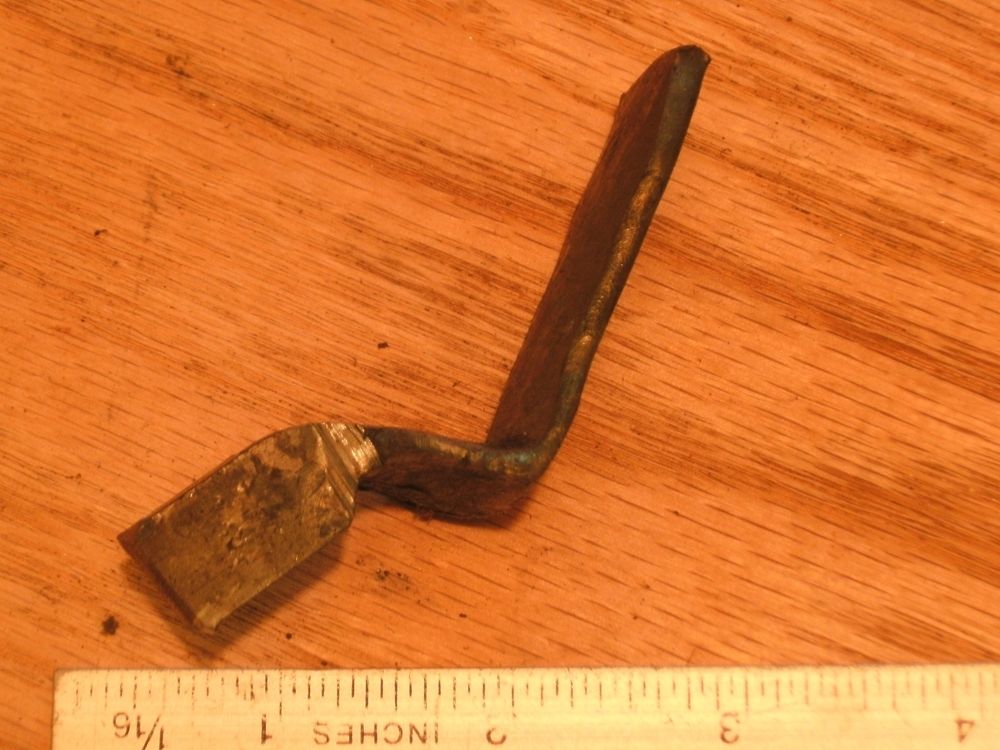
Next, split the square section with a hack saw and spread the two leaves apart. Just as with the hammer, you may need to use the dull cold chisel tool to close up any tear at the tip of the split as you open the two leaves. Rough forge and file until the frizzen looks like this. As you can see, I have smoothed the pan cover and blade sections a lot.
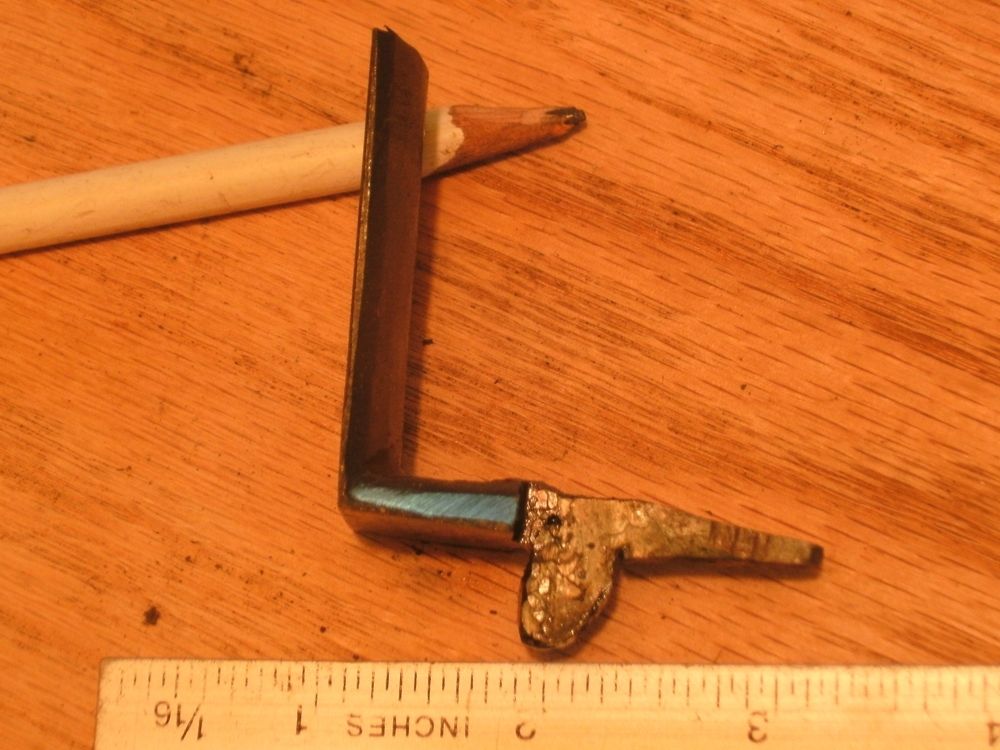
At this point, file the sharp outside square, the pan cover bottom and the side of the hole/cam/stop to very nearly the finished dimension. Don't worry that the part is rather ugly now, here is where you set the final dimensions for the frizzen to function properly. Now glue the rough frizzen to the top of the flash pan using super glue as before with the store-bought one. This allows the pivot hole to be drilled as to maintain proper alignment, I know that this is "cheating" for the HC folks.
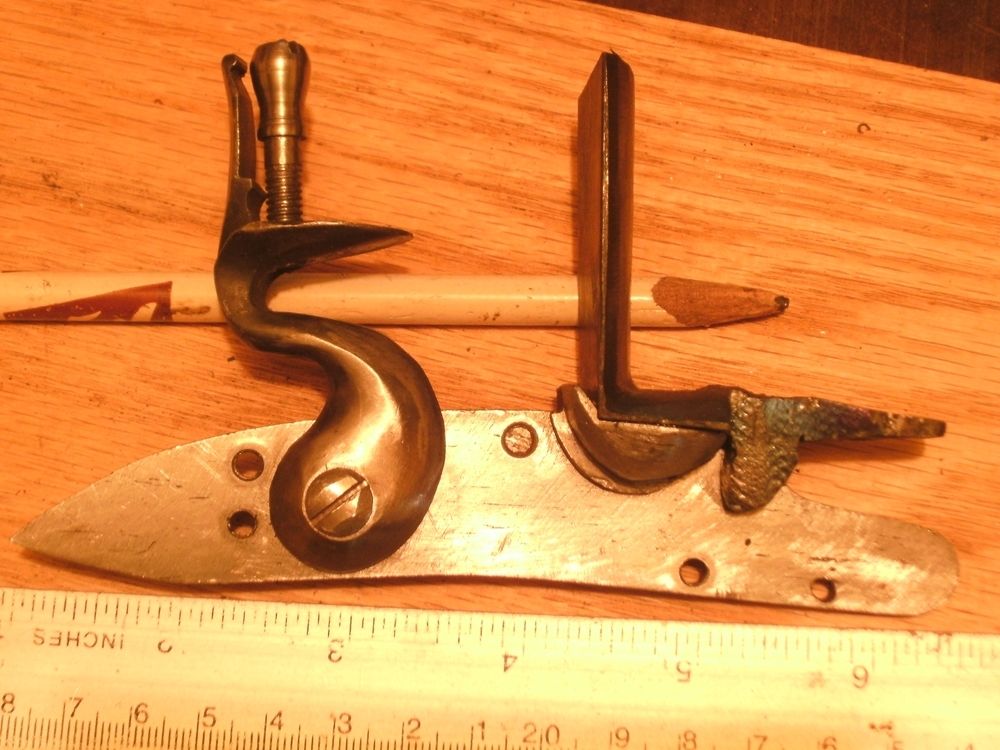
Drill the hole for the pivot screw. I did use a drill press and a twist drill here, the crowd was not watching. Give the frizzen a rap with a hammer and the super glue joint will release. Finish enlarging the pivot hle to the proper diameter for the pivot screw shank. The drill should follow the existing hole.
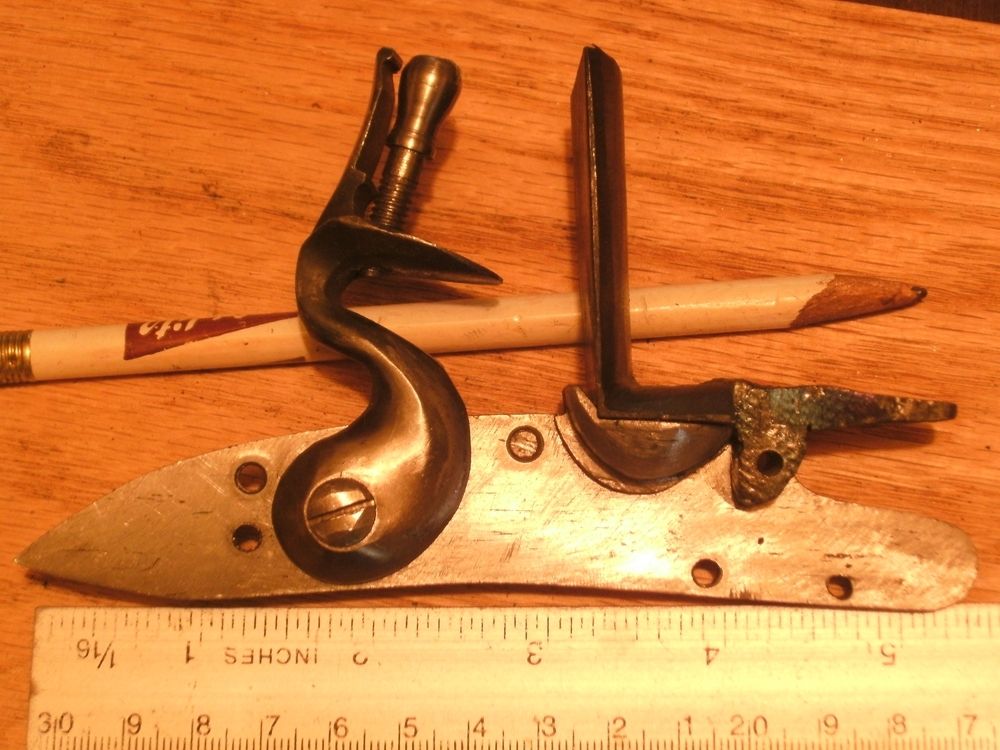
Now we begin filing the part to bring it to the shape and style we want. Here I want a rounded shape to match the eventual rounded shape of the lock plate. You could just as easily file the part to an angled shape with flats.

Lastly we bend the blade to a proper curve and bend the stop to an attractive curve and make the whole thing "Pretty" But that for later.
Jim

